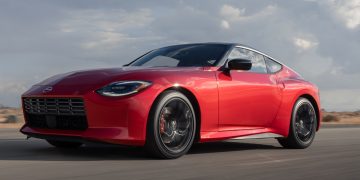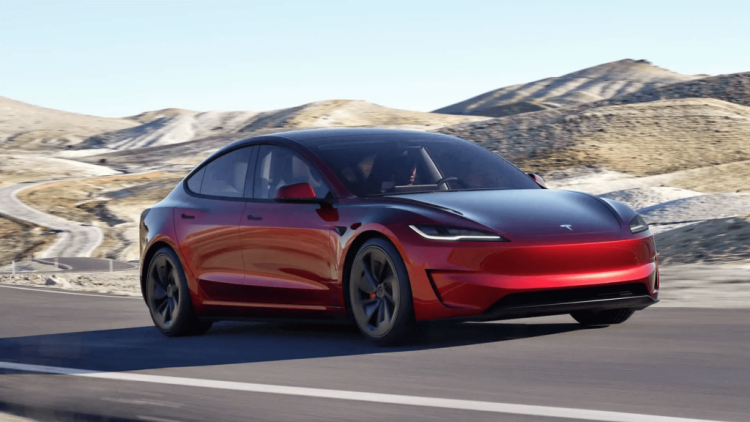In an era dominated by technological advancements, electric vehicles, and ever-changing automotive designs, classic cars continue to captivate the hearts of car enthusiasts around the world. These vehicles, many of which were produced decades ago, maintain a presence in car shows, auctions, and private collections, and their influence is still evident in modern car culture. But what is it about these vintage models that allows them to retain such significant cultural and emotional appeal?
The enduring popularity of classic cars can be attributed to several factors, ranging from their historical significance to their aesthetic appeal, and from the nostalgia they evoke to the emotional connections they foster. In this article, we’ll explore the key reasons why classic models continue to hold such a profound influence among car lovers worldwide.
1. Nostalgia and the Romance of the Past
One of the strongest factors that contribute to the ongoing popularity of classic cars is nostalgia. For many car enthusiasts, these vehicles represent a connection to an earlier time—a period when cars were more than just modes of transportation, but symbols of personal style, freedom, and innovation. The romanticism of the past is a major driving force for collectors and fans of vintage automobiles.
a. Personal and Cultural History
Many of the classic cars that enthusiasts adore were not just significant in terms of automotive history but also cultural milestones. These vehicles are often tied to memories of past decades, when they may have been the car of choice for a family, a young couple, or a first-time buyer. These memories form an emotional bond that goes beyond mere mechanics and design, creating a sense of connection to the past.
For some, classic cars represent their childhood dreams or a time in their life when owning such a vehicle felt like an aspiration achieved. The vehicles may symbolize simpler, more carefree times, and owning or restoring them allows individuals to relive those moments or pass them down through generations.
b. The Golden Age of Motoring
The mid-20th century is often referred to as the “golden age” of motoring, where car manufacturers pushed the boundaries of design, engineering, and performance. Iconic models from brands like Chevrolet, Ford, Porsche, and Ferrari from the 1950s and 1960s are often seen as symbols of a time when cars were built with character, bold designs, and raw performance. This era marked the pinnacle of traditional car manufacturing, and these models are revered for their ability to capture the spirit of a bygone era.
2. Timeless Design and Craftsmanship
Classic cars are often admired for their distinctive designs—many of which were groundbreaking for their time. Unlike some modern cars, which may prioritize functionality and aerodynamics over visual appeal, classic vehicles were often crafted with unique lines, curves, and intricate details that are not as prevalent in contemporary designs.
a. Sculptural Aesthetics
The aesthetic beauty of classic cars, especially those from brands like Jaguar, Aston Martin, and Mercedes-Benz, has earned them a place as rolling works of art. Their smooth curves, chrome accents, and detailed interiors evoke a sense of elegance and luxury that continues to captivate car enthusiasts today.
These cars are often viewed as true examples of artistry in motion. The craftsmanship that went into the building of these vehicles is something that many modern cars simply can’t match, given the emphasis on mass production and standardized components in the present day. Enthusiasts admire the hand-built details and the unique styling that went into these vehicles, which were designed at a time when a car’s visual appeal was just as important as its performance.
b. Designing for Emotion
Classic cars were designed not only with performance in mind but with an emphasis on evoking emotion through their design. Whether it’s the iconic 1960s Ford Mustang with its aggressive front grill and low-slung stance or the Porsche 911, whose simple yet timeless shape has remained largely unchanged for decades, these cars were designed to stir emotion every time they hit the road. The emotional connection with these vehicles is strong, as they embody a sense of freedom, power, and elegance that still resonates with car enthusiasts today.

3. The Thrill of Restoration and Ownership
For many car enthusiasts, restoring a classic car is as much a passion as simply owning it. The process of bringing an old, worn-out vehicle back to life is a highly rewarding and challenging endeavor, and it allows owners to engage with their cars in a very personal way.
a. Restoring the Past
Restoring a classic car isn’t just about fixing it—it’s about preserving history. Enthusiasts take great pride in ensuring that every detail of the restoration is true to the original design and specifications, whether it’s sourcing authentic parts or carefully matching the paint color. This process is deeply satisfying, as it requires both technical skill and knowledge about the vehicle’s history and design. The process often involves collaboration with specialists in the field, further building a sense of community among classic car lovers.
b. A Rewarding Investment
Classic cars also offer the potential for financial reward, as certain models have become highly valuable collector’s items. Well-maintained or restored cars, especially rare or limited-edition models, can appreciate significantly in value over time. For collectors, classic cars are not just a hobby but also a financial investment. The demand for certain models, like the Ferrari 250 GTO or the Porsche 356, can push prices into the millions of dollars, making classic cars a lucrative market for investors as well as enthusiasts.
4. The Sound, the Feel, and the Driving Experience
There’s something visceral and exhilarating about driving a classic car. Many enthusiasts will argue that modern vehicles, despite their advancements in technology and performance, cannot compare to the raw driving experience of classic cars. Whether it’s the rumble of a V8 engine or the feeling of a manual transmission, the experience of driving a classic car is unique and often more engaging than today’s cars.
a. The Sound of Power
The sound produced by classic cars is a major part of their appeal. Many classic models are known for their distinctive exhaust notes—whether it’s the thunderous growl of a Chevrolet Corvette or the high-pitched growl of a Ferrari. For many enthusiasts, this is one of the most important elements of car ownership, as the sound of a car can evoke strong emotions and memories. The auditory experience of driving a classic car is simply not something that can be replicated in modern electric or hybrid vehicles.
b. Mechanical Engagement
While modern cars often feature automated driving aids like automatic transmissions, power steering, and self-parking features, classic cars require a much more hands-on approach. Driving a vintage vehicle often means engaging directly with the vehicle’s mechanical components—such as shifting gears manually, steering without power assistance, and hearing the engine roar as it accelerates. This creates a connection between the driver and the car that’s deeply rewarding.
For those who appreciate the skill involved in mastering a non-automated vehicle, classic cars provide a sense of authentic driving experience that modern vehicles, with their focus on convenience and automation, can’t replicate.
5. Car Culture and Community
Classic cars also have a way of bringing people together, forming a unique and dedicated community of enthusiasts. Car shows, auctions, and club meetings provide opportunities for people to bond over their shared passion for these vehicles.
a. Car Shows and Gatherings
Car shows, where classic car owners come together to showcase their prized possessions, are a great opportunity for enthusiasts to share their love for vintage cars. These events not only provide a platform for showcasing rare or restored models but also serve as a place where like-minded individuals can exchange stories, tips, and knowledge. Whether it’s the Pebble Beach Concours d’Elegance or the Goodwood Revival, these events have become integral parts of global car culture.
b. The Bond of a Shared Passion
The ownership and restoration of classic cars create a sense of community and belonging. Many enthusiasts belong to car clubs, where they can connect with others who share their passion for the same make and model. These clubs foster camaraderie and a sense of belonging, as members support each other in the upkeep, restoration, and enjoyment of their classic cars.
6. Enduring Legacy of Iconic Models
Finally, many classic cars retain their influence because they are simply timeless icons in automotive history. The Ford Mustang, Chevrolet Camaro, Jaguar E-Type, Porsche 911, and Ferrari 250 GTO are just a few examples of models that have become ingrained in car culture, making them revered by both car enthusiasts and casual fans alike. These vehicles not only represent engineering marvels of their time but have transcended into symbols of freedom, performance, and luxury.
The legacy of these models is often perpetuated through popular media (movies, television shows, and advertisements) and through pop culture, where they appear as symbols of rebellion, style, and aspiration.
Conclusion: A Timeless Appeal
The enduring popularity of classic cars can be attributed to a combination of nostalgia, timeless design, craftsmanship, and the emotional connection they foster with their owners and enthusiasts. These vehicles represent more than just transportation—they are symbols of history, craftsmanship, and personal identity.
Despite the rapid evolution of the automotive industry and the rise of electric and autonomous vehicles, the fascination with classic cars remains as strong as ever. Whether through the joy of restoration, the excitement of driving, or the emotional pull of nostalgia, classic cars continue to captivate generations of car lovers, ensuring their place in the cultural landscape for years to come.


































Discussion about this post